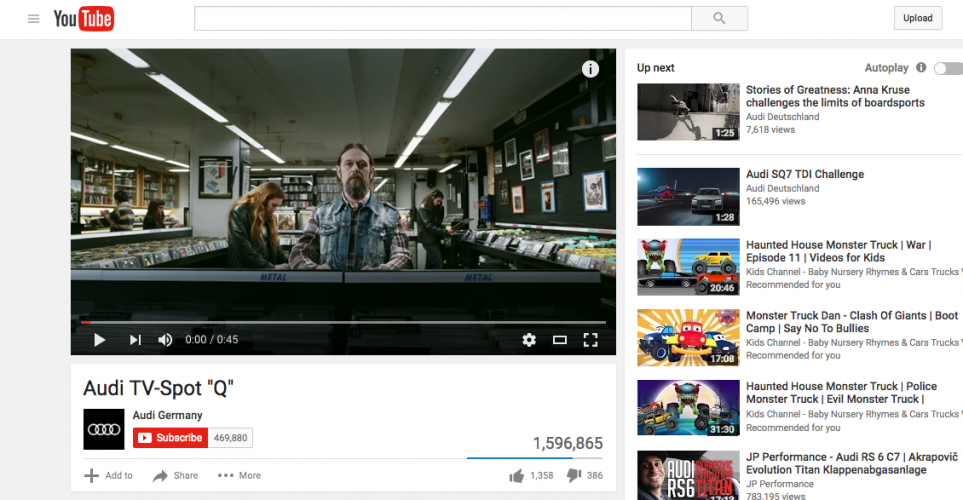Above The Line Advertising
Above The Line Advertising (ATL) is a marketing strategy that aims to promote a product or service to a wide audience via mass media channels, such as television, radio, or print media. This approach attempts to grab the reader’s attention so that they want to read on and learn more. It is often used to create brand awareness and increase overall market share.
While ATL advertising can be effective in generating brand recognition, it can also be costly and less targeted than other advertising methods. With large audiences, there are many pain points to consider, such as ineffective targeting, a lack of measurable results, and the possibility of low engagement rates with the advertisement.
The target of ATL advertising is to reach a broad audience in order to increase brand awareness and interest in the product or service. It aims to create an emotional connection with consumers.
In summary, Above The Line Advertising aims to reach a broad audience through mass media channels to increase brand recognition and market share. While it may be effective, it can also be costly and less targeted than other advertising methods.
Above The Line Advertising: An Overview
Above The Line Advertising targets a broad audience through traditional mass-media channels, such as television, radio, and print media. The target is to create an emotional connection with consumers to drive higher engagement and increase brand recognition. In my personal experience, I’ve seen ATL advertising campaigns used to promote large events, such as concerts and sports matches.
The success of an ATL campaign is closely tied to creating a memorable message that resonates with consumers. Many successful ads use humorous or emotionally charged content that aims to stick in the viewer’s mind. Additionally, using images and video that evoke positive emotions can increase engagement and brand recall. One standout ATL ad campaign that I remember is the Coca-Cola “Happiness Machine” campaign, which used a simple concept to create an emotional connection with the audience.
Benefits and Tips of Above The Line Advertising
Tips for Success
To succeed with ATL advertising, it’s important to create content that resonates with your target audience. This can be achieved by using emotive language, images, and video that evokes positive emotions. Additionally, it’s important to consider the timing of your campaign to ensure the message reaches your target audience when they are most attentive.

About Above The Line Advertising
Above The Line Advertising is a marketing technique that uses traditional mass-media channels, such as television, radio, and print media, to promote a product or service to a broad audience. It is generally aimed at creating brand awareness and increasing market share. It is often more costly and less targeted than other advertising methods.

Famous Person about Above The Line Advertising
David Ogilvy, a famous advertising executive, was a proponent of Above The Line Advertising. He believed that it allowed for greater reach and helped build brand awareness quicker than other advertising methods. In his book, “Confessions of an Advertising Man,” he explains his philosophy on advertising and the benefits of using Above The Line Advertising in campaigns.

Above The Line Advertising vs. Below The Line Advertising
Above The Line Advertising and Below The Line Advertising (BTL) are often compared as two approaches to marketing. While ATL is focused on the promotion of a product or service to a broad audience through mass media, BTL aims to reach a smaller, targeted audience through personal interactions or one-on-one promotion. BTL methods include email campaigns, direct mail campaigns, and social media advertising.
Facts about Above The Line Advertising
In recent years, companies have shifted away from ATL advertising in favor of more measurable and targeted methods such as social media and influencer marketing. However, there is still a place for ATL advertising in many marketing campaigns, particularly for larger companies with greater resources for advertising.

Question and Answer about Above The Line Advertising
- Q: What is Above The Line Advertising?
- Q: What are some examples of Above The Line Advertising?
- Q: What are some benefits of Above The Line Advertising?
- Q: What are some disadvantages of Above The Line Advertising?
A: Above The Line Advertising is a marketing method that promotes a product or service through traditional mass media channels, such as television, radio, and print media.
A: Examples of Above The Line Advertising include television commercials, billboards, and print advertisements in newspapers or magazines.
A: Above The Line Advertising can be a cost-effective way to increase brand recognition and awareness, particularly for larger companies with resources for advertising campaigns.
A: Above The Line Advertising can be costly and less targeted than other advertising methods, leading to lower engagement rates and return of investment for some campaigns.
Conclusion of Above The Line Advertising
Above The Line Advertising can be a powerful tool in a marketer’s toolbox, particularly for campaigns aimed at creating brand awareness and increasing market share. However, it can be costly and less targeted than other advertising methods, and its effectiveness depends on the execution of the campaign. As with any marketing method, it is important to continually evaluate the outcomes and adapt strategies as necessary to achieve the desired results.
Gallery
Above The Line Advertising – Advertising Agency In Singapore Ant Team

Photo Credit by: bing.com / offline image34 wisely neilpatel clientes
Above The Line & Below The Line Advertising – Business Advice | Life

Photo Credit by: bing.com /
Atl Or Above Line Advertising Concept Image Of Vector Image

Photo Credit by: bing.com / atl
What Is Above The Line And Below The Line Advertising?

Photo Credit by: bing.com / line below advertising above marketing btl vs digital atl strategy
Above-the-Line Advertising – Kurze Und Verständliche Erklärung

Photo Credit by: bing.com /



